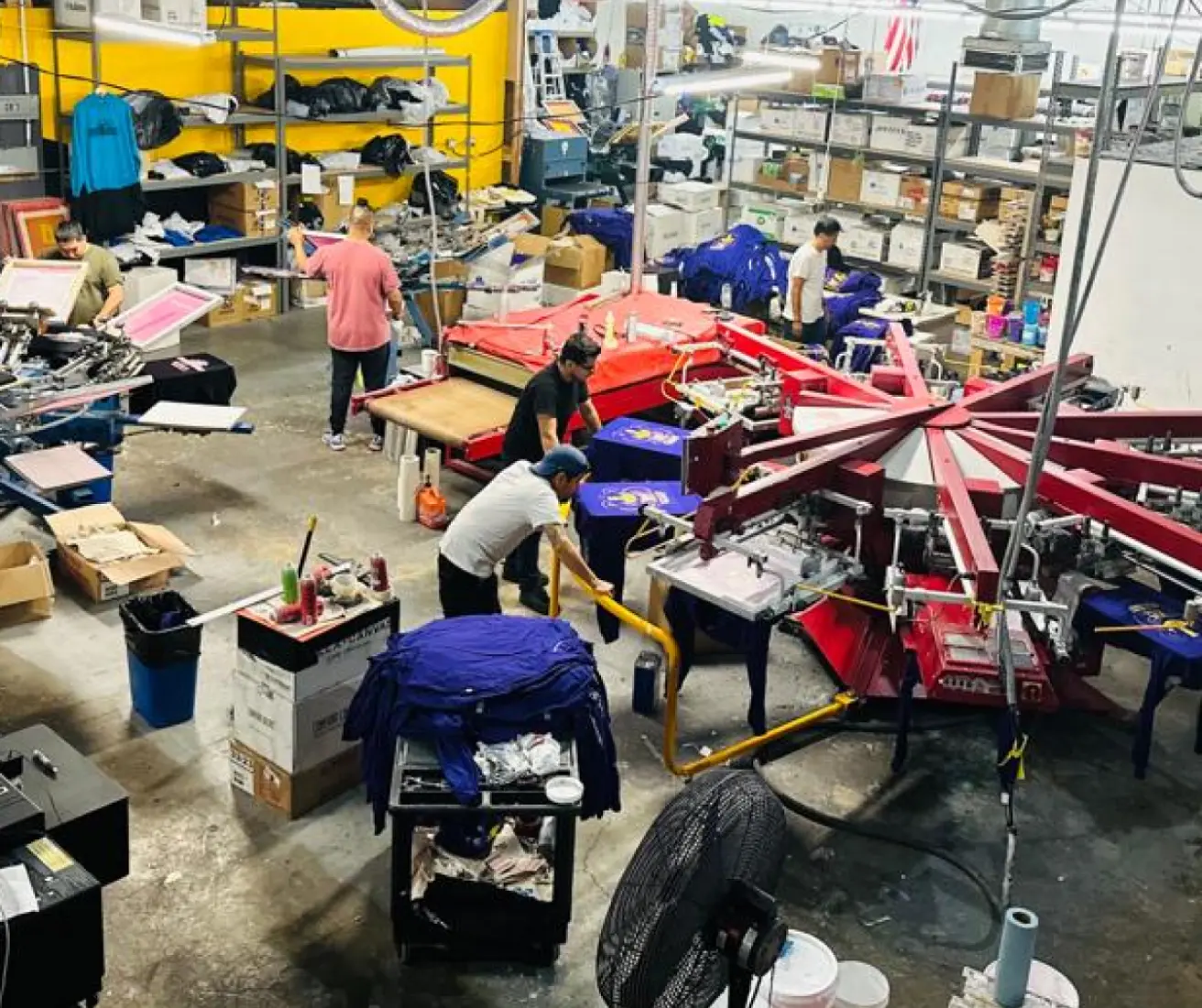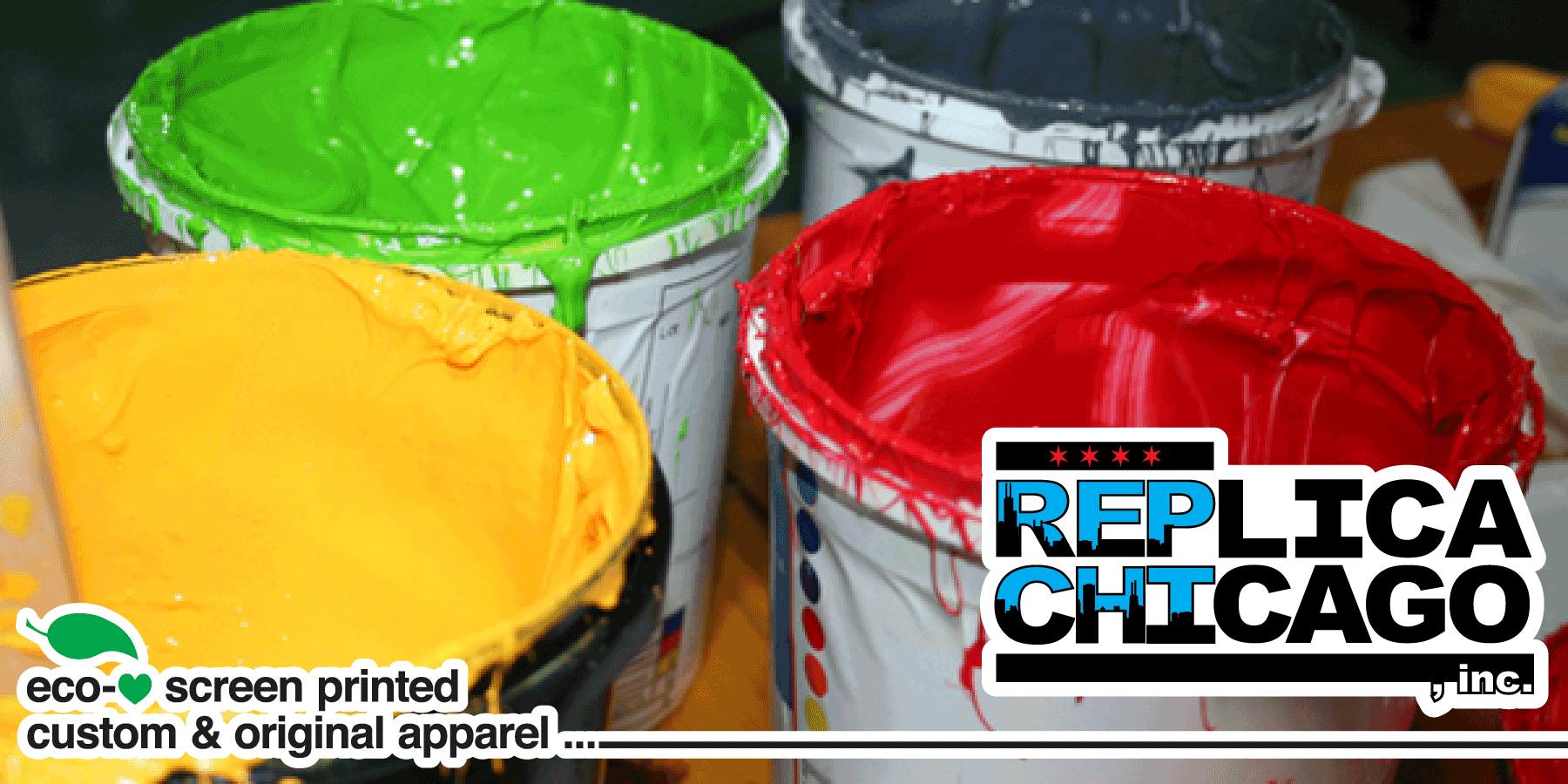Silk Screen Printing for Bold and Lasting Designs
Display Printing Uncovered: Every Little Thing You Required to Understand About Tee and Garment Printing Techniques
If you've ever questioned exactly how those vibrant styles finish up on your preferred tee shirts, you remain in the best place. Screen printing is an interesting method that combines art with technique, supplying endless possibilities for creativity. Understanding the fundamentals, from equipment to ink options, can substantially affect your results. Prepared to check out the vital elements that make screen publishing an art type? Allow's uncover the details that can raise your jobs.
The Basics of Screen Printing: Just How It Works
When you plunge right into screen printing, you'll find it's both a science and an art. At its core, display printing involves developing a stencil, or screen, that enables ink to travel through only in particular locations (screen printing kit). You begin by picking your design and preparing your screen with a light-sensitive emulsion. When you subject this emulsion to light, it sets, leaving your style as a negative space.
Next, you'll blend your inks and prepare your printing surface area. Placement the display over the textile, after that use a squeegee to push ink through the screen onto the garment. This procedure calls for accuracy, as you desire clear, vivid prints. After printing, you'll cure the ink with warmth, guaranteeing it sticks to the textile and lasts with washes. Each action is necessary, and understanding them will certainly boost your screen printing skills, transforming straightforward garments right into unique, meaningful pieces.
Kinds Of Display Printing Techniques
When you understand the fundamentals of display printing, it's time to discover the numerous strategies that can boost your designs. One prominent approach is typical display printing, where ink is pushed with a stenciled display.
An additional alternative is plastisol printing, understood for its toughness and vibrant shades, making it a favored for lots of brand names. Experiment with halftone printing to produce gradient results and elaborate layouts.
Crucial Tools for Display Printing
To accomplish stunning results in screen printing, having the right tools is essential. You'll need a strong screen printing structure, which holds the mesh that transfers your style onto the garment. Next off, invest in top quality squeegees; these are vital for applying ink evenly across the screen.
Selecting the Right Inks and Materials
When choosing inks and materials for screen printing, you need to take into account the kind of ink that works finest for your job. Consider fabric compatibility to guarantee your designs look terrific and last lengthy. Also, explore environment-friendly ink choices to make your printing process more sustainable.
Kinds Of Display Inks
Picking the best display ink is necessary for accomplishing vivid, resilient prints that fulfill your project's demands. There are numerous types of screen inks to check out. Specialized inks, such as glow-in-the-dark or metallic, can add one-of-a-kind effects to your styles.

Fabric Compatibility Considerations
Understanding textile compatibility is vital for attaining top quality screen prints, especially because different materials respond uniquely to various inks. Constantly evaluate your inks on sample material to guarantee they adhere appropriately and maintain color integrity. Furthermore, maintain in mind that material weight and texture can impact the last result, so choosing the ideal ink and material combo is essential for your task's success.
Eco-Friendly Ink Options
Environmentally friendly inks are ending up being a popular choice for screen printers that want to lessen their ecological impact while preserving quality. When selecting inks, take into consideration water-based inks, which are less unsafe and less complicated to clean up compared to conventional solvents.
In addition, try to find inks made from renewable energies, such as soy or vegetable-based choices. By selecting the ideal inks and materials, you'll not only develop magnificent designs but also add to a more lasting printing procedure. Make the button, and your prints will reflect your dedication to the environment!
Preparing Your Style for Screen Printing

Submit Format Demands
To assure your layout looks sharp and vibrant on textile, you'll require to pay close interest to file format needs for screen printing. Make sure your style has a clear background to prevent undesirable white sides on your prints. Maintain shade settings in mind; CMYK is typical for display printing, so convert your RGB makes appropriately.
Color Splitting Up Methods
Shade separation is a necessary action in preparing your style for screen printing, and understanding it can considerably boost your print top quality. You'll require to damage your style into individual shades, as each color needs a different display throughout printing. Start by determining all the colors in your style and develop layers each. You can utilize software like Adobe Photoshop or Illustrator to isolate and separate shades properly. Be certain to save each layer as a different documents, generally in a layout like TIFF or PSD. This precision not only ensures precise color representation however additionally streamlines the printing procedure. By paying focus to shade splitting up, you'll accomplish vibrant and expert lead to your screen-printed garments.
Resolution and Size
Accomplishing the very best lead to display printing starts with assuring your design has the right resolution and dimension. Ideally, your artwork ought to be at the very least 300 DPI (dots per inch) for sharp, clear prints. Your final item might look pixelated and less than professional. if you utilize reduced resolution.
When it concerns size, think about the dimensions of your print location. Design your artwork to match the last print dimension, preferably creating it in the real dimensions you'll be publishing. This way, you'll avoid any unanticipated scaling issues.
Always check your style in both vector and raster layouts. Vector graphics can be scaled without shedding quality, making them suitable for display printing. Preparing correctly will guarantee your style looks incredible on every garment!
Step-by-Step Screen Printing Refine
Display printing is a dynamic process that enables you to produce lively layouts on different surface areas. To get going, you'll require a display, solution, and your picked ink. Prepare your display by cleansing it thoroughly. Next, apply the emulsion evenly and allow it dry in a dark location. Once dry, expose your screen to light with your layout placed on it, which will harden the solution where the light hits, developing a pattern - screen printing kit.
After washing out the unexposed emulsion, your display is all set. Establish it up on your printing surface and align your garment underneath it. Put ink onto the display and utilize a squeegee to push the ink through the stencil onto the textile. Raise the screen very carefully and let the print dry. Ultimately, treat the ink making use of warmth to assure toughness. That's it! You've efficiently display printed your layout.
Tips for Successful Display Printing Projects
While you're diving right into your display printing jobs, keep in mind that Bonuses prep work is vital to success. Begin by gathering all your materials-- inks, garments, squeegees, and displays. A clean work area aids stop undesirable errors, so clean before you start.
Next, confirm your art work is high-resolution and correctly sized for your garment. Evaluate your display for appropriate direct exposure and view website tidy it completely to avoid spots. When blending your inks, follow the supplier's standards to accomplish the appropriate consistency.
During printing, use also pressure with your squeegee for constant outcomes. Don't rush; take your time to validate each print fulfills your standards. After printing, allow your garments completely dry completely before handling or packaging them.
Lastly, constantly keep an example of your help future referral. By doing this, you can examine your progress and improve your methods gradually. Happy printing!

Frequently Asked Questions
For how long Does It Require To Establish a Screen Printing Job?
Setting up a display printing work commonly takes around 30 minutes to an hour. You'll prepare the screens, mix inks, and adjust journalism. The moment varies based upon intricacy and experience, so remain organized!
Can I Print on Various Material Enters Using the Same Technique?
Yes, click here to read you can print on different textile types making use of the exact same strategy, but you'll require to adjust your setups and inks. Some textiles soak up ink in different ways, so exploring warranties the very best outcomes for each and every product.
What Are Usual Mistakes to Prevent in Screen Printing?
When screen printing, prevent typical errors like making use of the wrong ink, overlooking correct exposure times, or avoiding pre-press checks. Constantly examine your setup and preserve clean screens to guarantee top quality results each time.
How Can I Effectively Tidy and Preserve My Display Printing Tools?
To correctly clean and keep your screen printing devices, you must consistently clean screens with appropriate solvents, inspect squeegees for wear, and guarantee all tools are kept dust-free and dry. Consistency enhances and avoids expensive repairs performance.
Is Screen Printing Eco Pleasant Compared to Other Techniques?
Screen printing can be much more eco-friendly than other techniques, particularly if you make use of water-based inks and eco-conscious products. By selecting lasting materials and techniques, you reduce waste and lessen your influence on the world.
Screen Printing Uncovered: Every Little Thing You Required to Know Regarding Tee Shirt and Garment Printing Strategies
At its core, display printing includes creating a stencil, or display, that permits ink to pass via just in certain locations. Setting the display over the textile, after that utilize a squeegee to push ink through the display onto the garment. One prominent approach is traditional display printing, where ink is pressed through a stenciled display.When picking inks and materials for screen printing, you need to take into account the type of ink that functions finest for your project.